

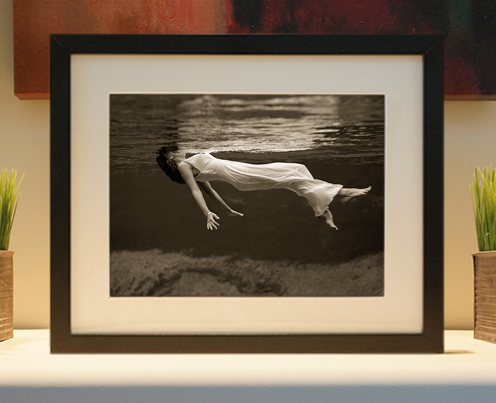
Framed or unframed, desk size to sofa size, printed by us in Arizona and Alabama since 2007. Explore now.
Shorpy is funded by you. Patreon contributors get an ad-free experience.
Learn more.

- Freeze Frame
- Texas Flyer wanted
- Just a Year Too Soon
- WWII -- Replacing men with women at the railroad crossing.
- Yes, Icing
- You kids drive me nuts!
- NOT An Easy Job
- I wonder
- Just add window boxes
- Icing Platform?
- Indiana Harbor Belt abides
- Freezing haze
- Corrections (for those who care)
- C&NW at Nelson
- Fallen Flags
- A dangerous job made worse
- Water Stop
- Passenger trains have right of way over freights?
- Coal
- Never ceases to amaze me.
- Still chuggin' (in model form)
- Great shot
- Westerly Breeze
- For the men, a trapeze
- Tickled
- Sense of loneliness ...
- 2 cents
- Charm City
- What an Outrage
- Brighton Park
Print Emporium
Free to Visitors: 1906
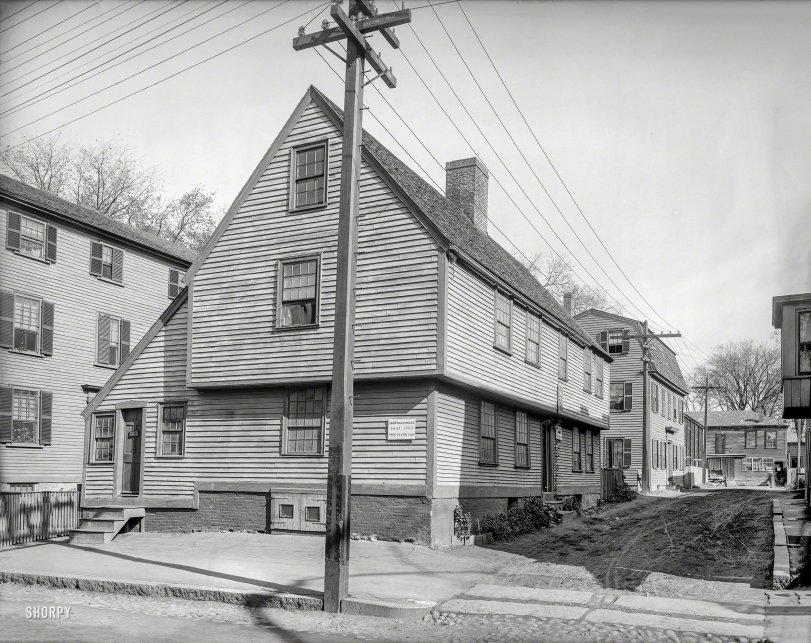
Salem, Massachusetts, circa 1906. "John Ward house, Prison Lane." Later moved to its current location on Essex Street. 8x10 inch glass negative. View full size.
Utility poles
Re: wiggy. I've noticed the different poles around the country and in my opinion they use what ever is the most abundant wood that's cheapest. Here in the Midwest there is lots of pine to just debark and shove in the ground but I think there was more hardwood in the northeast at this time so they treated them like sawmill timber from larger tree trunks.
Lettering on the cross-arms of the utility pole
That's a great example of the "cat slide" variant of the "saltbox house"! The way the second floor of the main block overhangs the first is very attractive, IMHO. 12 over 8 pane windows, presumably the upper sash is fixed. They look handmade.
The 1/3-height double door to the basement is interesting. What was that used for? Firewood?
The clapboards seem "too perfect" for a 1600's house. Early clapboards are sometimes "riven", that is split out from the log with a froe, rather than sawn. It's common to see them spaced closer together at the bottom of the wall. These appear to be sawn, which would presumably mean either they were laboriously pit-sawn or done by an "up-and-down" saw mill.
The telephone poles
are squared off and chamfered and, judging from the farther ones, have pyramidal tops. Much more effort (and wood) involved than with the usual tree trunks. Has anyone seen utility poles like this anywhere else?








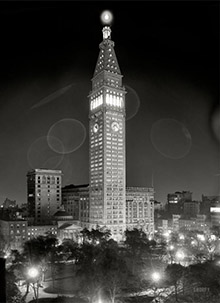
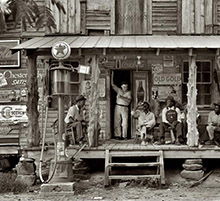
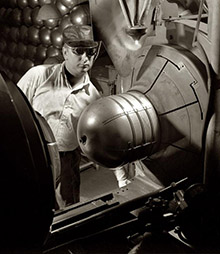
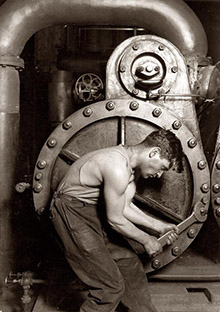

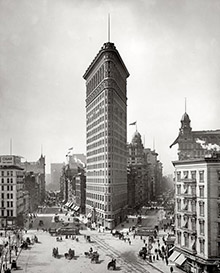
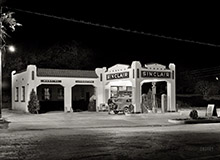

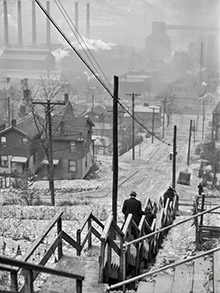
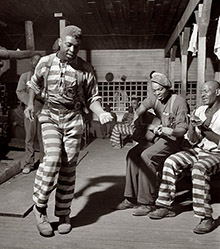


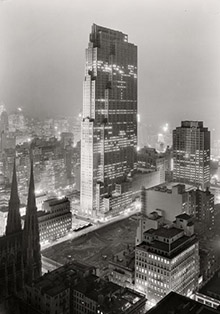

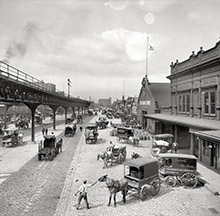

On Shorpy:
Today’s Top 5